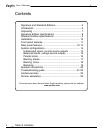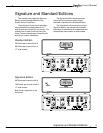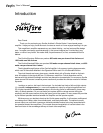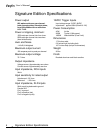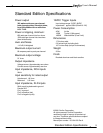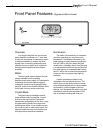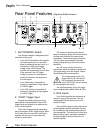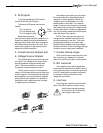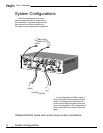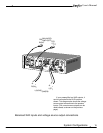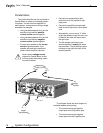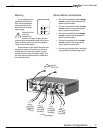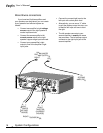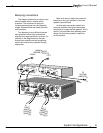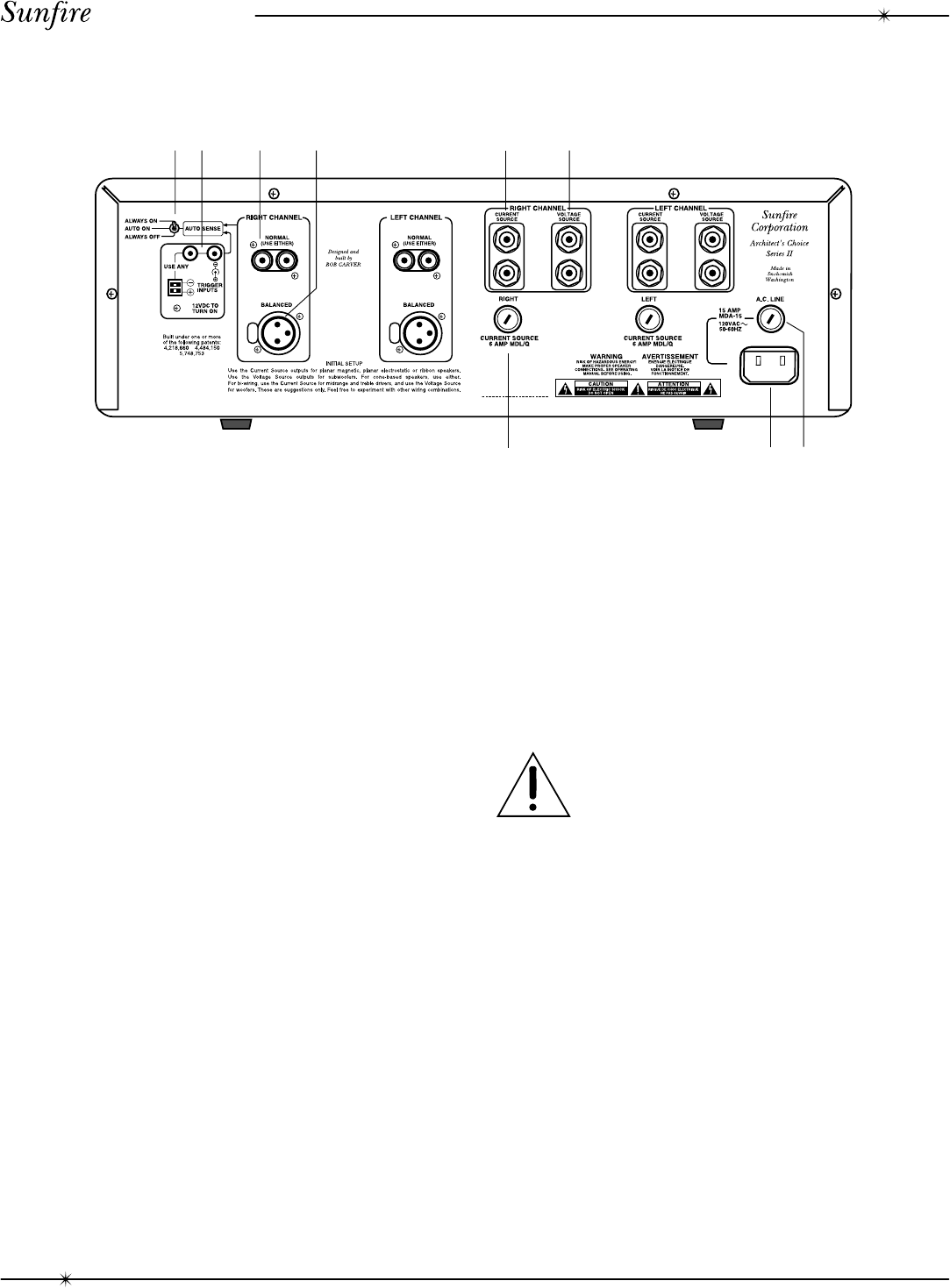
12
User's Manual
Rear Panel Features (Signature Edition shown)
Rear Panel Features
12 3 4 6
78
5
9
1. AUTO/ON/OFF Switch
Your Sunfire amplifier is designed with an
automatic on/off circuit.
• In the AUTO-ON position, the amplifier
will automatically turn on if an audio
signal is present at the right input, or if
it receives a 12VDC input trigger
voltage at the 12VDC inputs. The
amplifier will automatically turn off after
a few seconds if the 12V trigger
voltage is removed, or after approxi-
mately 30 minutes in the absence of
an audio signal.
• In the ON position, the amplifier is
always on, regardless of input signals
or 12VDC trigger.
• In the OFF position, the amplifier is
always off, regardless of input signals
or 12VDC trigger.
2. 12VDC Trigger Input
Although the signal sensing turn-on is
adequate for most installations, the 12VDC
trigger inputs are offered as an optional way
to turn on the amplifier.
The Sunfire Theater Grand preamplifier
has a compatible 12VDC trigger output. When
the Theater Grand is turned on, the Sunfire
amplifier will also turn on, even when the
volume is turned down.
1/8" mono mini jacks are provided for
ease of installation, along with a terminal strip
to allow more flexibility for custom-wired
installations. The terminal strip and both the
1/8" mini jacks are connected in parallel,
allowing 'daisy chaining' to turn on multiple
amplifiers.
Any 1/8" mono to mono (two-wire)
interconnect cable will suffice to connect the
12V trigger output from the Sunfire Theater
Grand preamplifier to the amplifier.
The voltage range for the 12V
trigger input is 5 to 18 Volts DC.
Do not exceed 18 volts on this
input. (CAUTION: Do not connect
AC line voltage to this input!)
The input impedance of the 12V trigger
input is approximately 600Ω (20mA @ 12V).
3. RCA Inputs
Your Sunfire amplifier has three sets of
inputs for each of the channels. Two are
unbalanced RCA inputs and one is a bal-
anced XLR type.
The two RCA inputs for each channel are
joined together internally and either one can
be connected to the corresponding output of
your preamplifier. The other can be used as a
daisy-chaining output, sending the preampli-
fier output signal to another channel or to
another amplifier.



